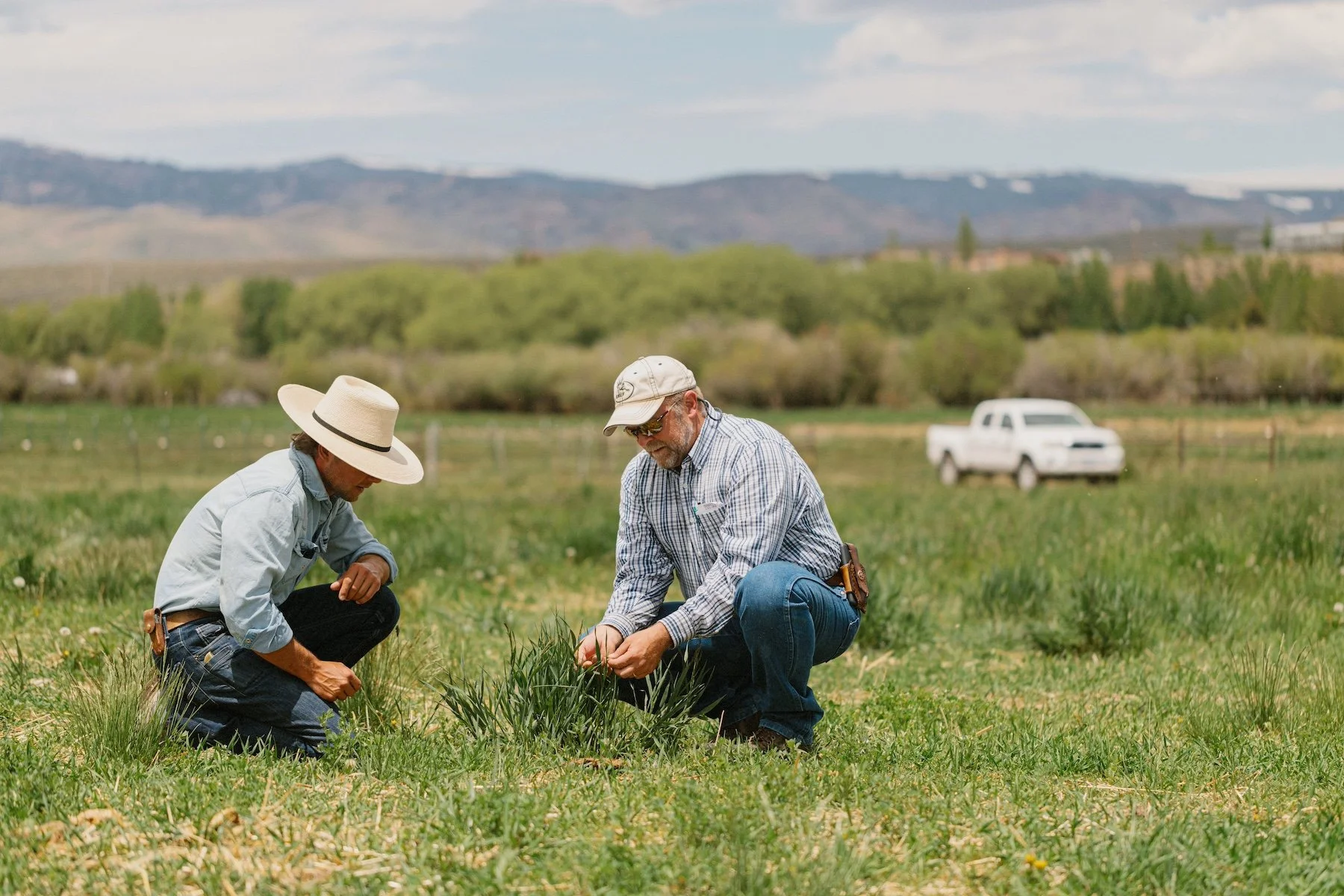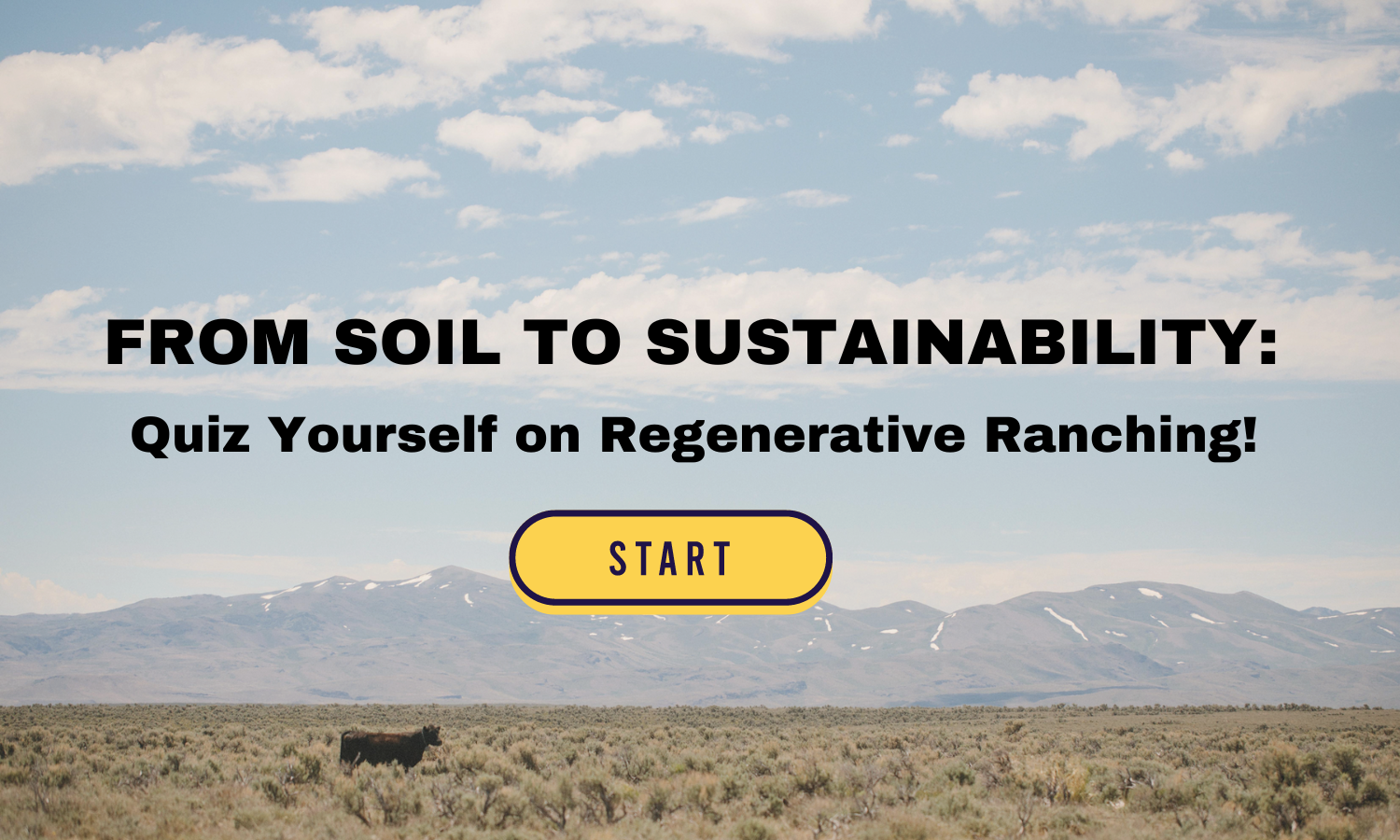Understanding the Basics of Regenerative Agriculture and Soil Health
Whether you’re new to the world of regenerative agriculture or you’re in search of a quick read to review the basics, you’ve come to the right place. Regenerative Ag is an exciting field focused on creating more sustainable farming and ranching systems through holistic practices that help nurture the soil, restore ecosystems, and enhance the resiliency of the land. Let’s explore the fundamentals of regenerative agriculture and why these practices are essential for healthier soil, healthier animals, and a healthier planet.
Why Regenerative Agriculture?
First, it’s important to know that regenerative agriculture is not a new concept. Although the term has gained popularity over the last few decades, the principles go back millennia. Indigenous people all over the world have been passing down the knowledge and wisdom of regenerative methods for generations and generations.
Regenerative agriculture is more than just a farming method; it’s a holistic approach to agriculture that aims to restore and enhance the health of our ecosystems. While conventional farming and ranching often deplete soil and rely heavily on the use of synthetic pesticides, herbicides, and fertilizers, regenerative agriculture instead focuses on improving soil health, increasing plant biodiversity, and mitigating climate change through carbon sequestration. It’s all about creating a system where nature, soil, crops, and livestock work together in harmony.
Soil Health: The Heart of Regenerative Agriculture
When soil is healthy, it teems with life, from tiny microbes to earthworms. Healthy dirt is a living, breathing community of organisms working together to create a fertile, nutrient-rich habitat. Think of soil as the Earth’s stomach: it processes organic material, breaks it down into nutrients, and feeds the plants that grow our food. Without healthy soil, plants struggle to grow, livestock don’t have access to diverse pastures, and the entire food system weakens.
Over time, conventional agricultural practices have led to widespread soil degradation. In many parts of the United States, over-tilling, synthetic chemicals, and single-crop farming have stripped the soil of its natural fertility and practically destroyed its ability to retain water and nutrients. The result is erosion, poor crop yields, and a loss of biodiversity. Regenerative practices, however, aim to reverse this damage by rebuilding soil health from the ground up.
The Basic Principles of Regenerative Agriculture
Now that we know why soil health is essential, let’s dig into the key principles of regenerative agriculture. These practices are the building blocks of healthy soil, resilient ecosystems, and sustainable ranching and farming.
1. Minimize Soil Disturbance: Conventional farming often involves heavy tillage, which can disrupt soil structure, reduce organic matter, and harm soil organisms. Regenerative practices emphasize minimal soil disturbance to maintain soil health and improve its ability to retain water and nutrients.
2. Practice Rotational Grazing: Rotational grazing (or managed grazing) involves moving livestock between different pasture areas, allowing the land time to recover. Unlike continual grazing, which can lead to loss of plant cover and increased erosion, this practice mimics the natural grazing patterns of wild herbivores, therefore promoting healthier soil, improved water retention, and diverse plant growth.
3. Keep the Soil Covered: When soil is left uncovered and exposed to wind and rain, it can start to wash away, lose important nutrients, and become less healthy. Keeping soil covered with mulch, covering crops, or plant residues left over after harvest helps to protect it from erosion, retain moisture, and provide habitat for beneficial microorganisms.
4. Increase Biodiversity: Biodiversity is crucial for resilient agricultural systems. Farmers and ranchers can create more balanced environments by planting various crops, incorporating different plant species, and promoting a diverse ecosystem. This diversity helps prevent pests and diseases, improves soil health, and can make the land more resilient to changes in weather.
5. Maintain Living Roots Year-Round: Roots are essential to soil health. They provide organic matter to the soil, improve soil structure, and help retain moisture. Regenerative practices aim to keep living roots in the soil for as much of the year as possible.
6. Integrate Livestock and Crops: In regenerative agriculture, integrating livestock with crops can create a more dynamic and productive system. Livestock can help to cycle nutrients, manage vegetation, and improve soil health through their manure. This integration creates a natural balance that benefits both crops and animals.
The Importance of a Tailored Approach
Since every farm and ranch faces a unique set of variables—from location to size to climate—what works for one might not work for another. That’s why regenerative methods encourage a tailored approach to decision-making and implementation. Here’s how farmers and ranchers use their knowledge and experience to adapt regenerative principles to their specific conditions:
1. Understand Local Conditions: Farmers and ranchers start by understanding their local environment, including soil types, climate, and vegetation. This knowledge helps them to choose practices that will work best for their specific conditions.
2. Experiment and Adapt: Regenerative agriculture is about continuous learning and adaptation. Farmers and ranchers often experiment with different techniques, monitor their outcomes, and adjust their practices based on what they observe. This process helps them find the best solutions for their unique situation.
3. Incorporate Knowledge and Experience: Farmers and ranchers draw on their own knowledge and experience, as well as insights from peers, advisors, and/or traditional knowledge keepers. They may seek advice, attend workshops, or collaborate with others to refine their approach and make informed decisions.
4. Focus on Goals and Values: Each farm and ranch has its own set of goals and values, whether they involve maximizing yields, improving soil health, or enhancing biodiversity. Decision-making is guided by these goals and values, ensuring that practices align with the farm or ranch’s broader vision.
5. Monitor and Evaluate: Regular monitoring and evaluation are key to successful regenerative practices. By keeping track of soil health indicators, crop or livestock health, and water quality data, farmers and ranchers can assess the impact of their practices and make necessary adjustments.
Regenerative Agriculture: A Resilient and Sustainable System
Regenerative agriculture practices work to mimic natural ecosystems by creating systems that support ecological balance. This means prioritizing soil health, biodiversity, and ongoing learning and adaptation. By embracing fundamental principles and tailoring their approaches, farmers and ranchers are creating more resilient and sustainable systems that benefit both the environment, their production goals, and the food we eat.
How’s your Regenerative Ranching Knowledge?
Take our regenerative ranching quiz to learn more about how holistic ranching practices restore soil health, boost biodiversity, and improve beef quality—all while tackling climate change. Whether you're a foodie, an environmentalist, or just curious about your food origins, our quiz is a great way to dig into the world of regenerative ranching.





